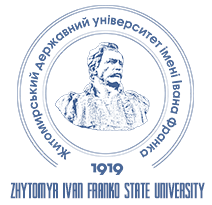ENGLISH TRAINEE TEACHERS’ PERSPECTIVE ON SYNCHRONOUS AND ASYNCHRONOUS LANGUAGE TEACHING
DOI:
https://doi.org/10.35433/pedagogy.2(105).2021.88-97Keywords:
distance education, professional communicative competence, asynchronous teaching, synchronous teaching, tertiary language education, trainee teachersAbstract
The temporary introduction of distance education at universities owing to the pandemic leads to the necessity to develop innovative methods of on-line teaching and learning that could become an adequate alternative of on-site teacher-student interaction and improve students’ professional skills. The background of the research states that in tertiary language education whose main aim is to develop students’ professional communicative competence it is of paramount importance to combine synchronous and asynchronous modes of interaction with the former creating an opportunity for live communication and immediate feedback and the latter developing students’ autonomy and being more flexible and convenient. As the two modes have different advantages the indices of their proper balance are still under discussion.
The present study aims to explore English trainee teachers' ability to reflect on the ways of on-line language learning and to find out their attitude towards synchronous/asynchronous teaching. The results of the questionnaire completed by 168 students of the Faculty of Foreign Philology at H. S. Skovoroda Kharkiv National Pedagogical University indicate that the majority of trainee teachers are on the whole satisfied with distance teaching and learning, though a great number of students consider the ratio of synchronous and asynchronous modes inappropriate. The findings of the research also suggest that trainee teachers would like more diversity in the tools used in distance education. Moreover, the more learning experience students have, the easier it is for them to adapt to different teaching conditions and the more willing they are to acquire the skills of working with various educational tools.
The received data may serve as the foundation for rationalizing the existing methods and techniques to increase the efficiency of trainee teachers’ distance education.
References
Chen, N.-S., Ko, H.-S., Lin, K., & Lin, T. (2005). A model for Using Synchronous Learning using the Internet. Innovations in Education and Teaching International, 42 (2), 181-194, DOI: 10.1080/14703290500062599 [in English].
Fidalgo, P., Thormann, J., Kulyk, O., & Lencastre, J. (2020). Students’ perception on distance education: A multinational study. International Journal of Educational Technology in Higher Education, 17, 1-18. Retrieved from https://doi.org/10.1186/s41239-020-00194-2 [in English].
Hrastinski, S. (2007). The potential of synchronous communication to enhance participation in online discussions: A case study of two e-learning courses. Information & Management, 45, 499-506, DOI:10.1016/j.im.2008.07.005 [in English].
Hrastinski, S., Keller, C. & Carlsson, S.A. (2010). Design exemplars for synchronous e-learning: A design theory approach. Computers & Education, 55(2), 652-662. Retrived from https://www.sciencedirect.com/science/article/abs/pii/S0360131510000680?via%3Dihub [in English].
Levin, B.B., He, Y., Robbins, H., & Holly, H. (2006). Comparative analysis of preservice teachers’ reflective thinking in synchronous versus asynchronous online case discussions. Journal of Technology and Teacher Education, 14 (3), 439-460. Retrieved from https://core.ac.uk/download/pdf/149233716.pdf [in English].
Murphy, E., Rodriguez-Manzanares, M.A., & Barbour, M. (2011). Asynchronous and synchronous online teaching: Perspectives of Canadian high school distance education teachers. British Journal of education technology, 42(4), 583-591. Retrieved from https://bera-journals.onlinelibrary.wiley.com/doi/epdf/10.1111/j.1467-8535.2010.01112.x [in English].
Pulity, I. (2019). Combining Synchronous and Asynchronous Communication in a Translational E-learning Language Environment: An Analysis of Teacher Perspective. Italian Studies in Southern Africa / Studi d’Italianistica nell’Africa Australe, 32(2), 245-274. Retrieved from https://www.ajol.info/index.php/issa/article/view/196065 [in English].
Saykılı, A. (2018). Distance education: Definitions, generations, key concepts and future directions. International Journal of Contemporary Educational Research, 5(1), 2-17. Retrieved from https://files.eric.ed.gov/fulltext/EJ1207516.pdf [in English].
Downloads
Published
Issue
Section
License

This work is licensed under a Creative Commons Attribution-NonCommercial-NoDerivatives 4.0 International License.
Authors published in this journal agree to the following terms:
a) The authors reserve the right to author their work and grant the journal the right to first publish this work under the Creative Commons Attribution License, which allows others to freely distribute the published work with a mandatory link to the authors of the original work and the first publication of the work therein magazine.
b) Authors have the right to enter into separate additional agreements regarding the non-exclusive distribution of the work in the form in which it was published by this journal (for example, posting work in an electronic repository of the institution or publishing as part of a monograph), provided that the reference to the first publication of the work is maintained therein. magazine.
c) Journal policy permits and encourages the submission of manuscripts by the authors on the Internet (for example, in repositories of institutions or on personal websites), both prior to submitting this manuscript to the editorial board and as it contributes to the emergence of productive scientific discussion, and has a positive impact on the promptness and dynamics of citing a published work (see The Effect of Open Access).

 ISSN
ISSN 





